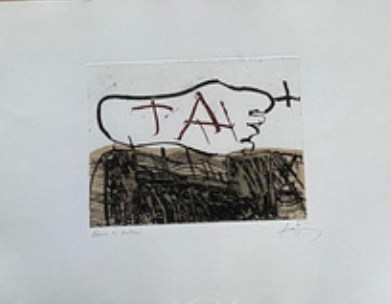Antoni Tàpies was a Spanish-Catalan artist known for his abstract, textured paintings that blended material experimentation, symbolism, and political themes. Initially influenced by Surrealism, he later became a key figure in Art Informel, using unconventional materials like sand, dust, and cloth to create rough, sculptural surfaces.
His work often incorporated crosses, letters, and footprints, reflecting themes of spirituality, human existence, and resistance against Franco’s dictatorship. Over his six-decade career, he gained international acclaim, winning the Golden Lion at the Venice Biennale (1993).
Tàpies’ legacy continues through the Fundació Antoni Tàpies in Barcelona, preserving his impact on contemporary art.


